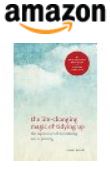Consequently, Ms Kondo's main point is that you want to make tidying a "one-time event". You are not just
cleaning up the bedroom, then the kitchen, then the garage or some other isolated area. The goal is that you are doing your entire house.
Tidying and de-cluttering your entire house is your sole project, and it may take several months, but it's the only way you'll break the
endless cycle of cleaning up this or that room and then doing it all over again next year.
Another key point is "Tidy by category rather than by location." Why? Because you might have keepsakes in a drawer in the room you are
cleaning up. But after you finish the room, you might find more keepsakes in a closet while you are going through the clothes in that closet. Then you
will have to switch gears between "which clothes do I want?" back to "which keepsakes do I want?" You will miss the opportunity to "get on a roll" with
your keepsakes.
There are many more key points that Ms Kondo offers to make this effort on your part a success.
So buy the book.
You'll be immensely satisfied if you do. Our kids kept saying "You need to read the book before you start". My wife did
but I cheated. But while I was going through my items, I did read the final chapters, and I'm glad I did. It turns out that Marie Kondo
has a remarkable grasp on the hidden life that is present in our world. She speaks of our possessions and our house as having
a life of their own. They are not just inanimate objects. She says for instance that she thanks her clothes each time she gets home from
work and hangs them up. And each time she goes to a clients house, she spends a couple of minutes in a kneeling position
while she is in communion with their house.
Sound goofy? It's not if you consider that all of existence is part of the Universal Consciousness. All the animals, the rocks,
and the trees are part of that Consciousness. So too are the goods composed of the elements of the Earth - the fabrics, the metals,
and the like. The Native American Indians knew this. Other folks in former times knew it. And everybody prior to Descartes
knew it.
Thus, in the chapter "Selection Criterion: Does it Inspire Joy", Ms Kondo described a long period of time when she was trying
to tidy-by-discarding. She tried tried for a long period of time to just discard, to throw away anything that she felt was no longer needed.
She found that it did not work, in part because she was even more predisposed to buy new items to replace those discarded.
One day she was so frustrated with finding no change that she fell to the floor, asking "what is wrong". She had a sense of something
telling her to "Look closely at what is there". She went to sleep right there on the floor and upon awaking, her "epiphany" ocurred:
"We should be choosing what we want to keep, not what we want to discard."
So she urges you, the tidyee, to pick
up every item you're considering, whether it is a book, a keepsake, or an article of clothing.Then ask yourself if it "sparks joy".
Ask your physicality. What does it feel like? If it sparks joy, it is retained, If not, it is discarded or recycled. It is this dialogue between
you and your possessions - your past - that hones your decision-making abilities and puts you in closure with
your past. You are putting your house in order. The "magic" part is that you are putting your life in order also.
Ms Kondo offers many accounts by her clients who report that they experience profound relief - a great weight lifted
from their being - when they discard books, collections, and the like. Some have even made career changes after their
"tidying episode".
For us, it was my wife who pointed out that that our extensive collections, Hummel figures, books, and Barbie dolls
for her and books, antique books, and antique bottles for me, were holdovers from the time we lived in a big city - Dallas, Texas.
(The good tech jobs are typically in big cities.) In big cities with little outdoor life, there often is not much to do but shop. For every 10 miles
you drive in such a place, there is another set of stores that are identical to those 10 miles back. So we collected Eddie Bauer clothes
and antiques.
We're in Oregon now. The ocean - that Powerful Being - is an hour away, and we are prompted from time to time to go and
take part in its presence. So we are able now to release our collections.
Not convinced yet? Then consider this: We have tried and failed several times to get a house closer to the
ocean. Why? Because we needed a larger house with lots of storage. Such a house costs $350,000 to $400,000. We have about
$250,000 in equity in our present home. Like so many other people in our age group, our response to real estate agents when
asked "what do you want most in a house?" is "Storage! Storage! Storage!" Why? So we can put all our accumulated stuff in it!
So, while in the process of "decluttering", I had my own epiphany:
We have been trying to buy a $350,000 Storage Unit!!
Here's some before/after/during pictures.
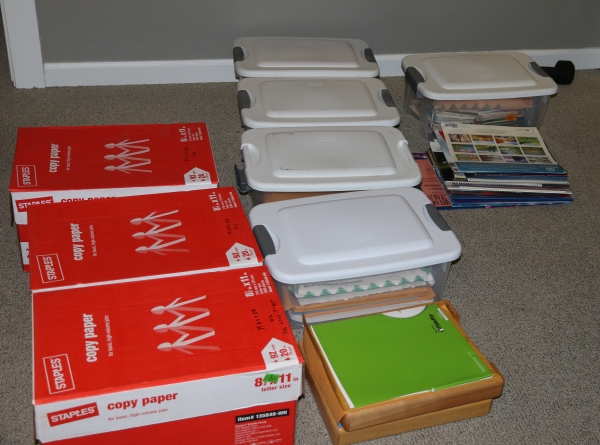 |
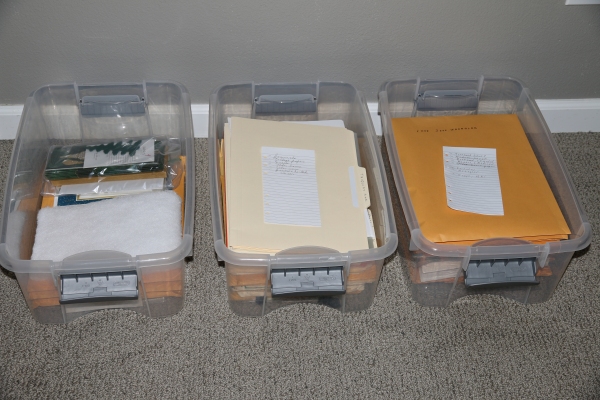 |
All these boxes contained various archived documents along with "keeepsake" papers and 20 calendars I was keeping "in case I wanted to make framed wall hangings of some photos" |
Here's the "after" |
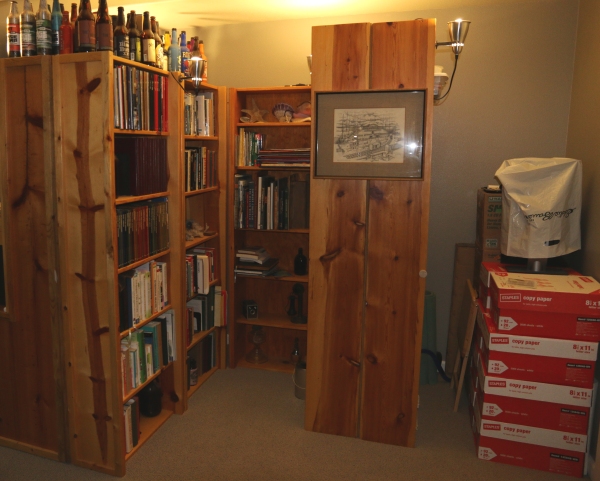 |
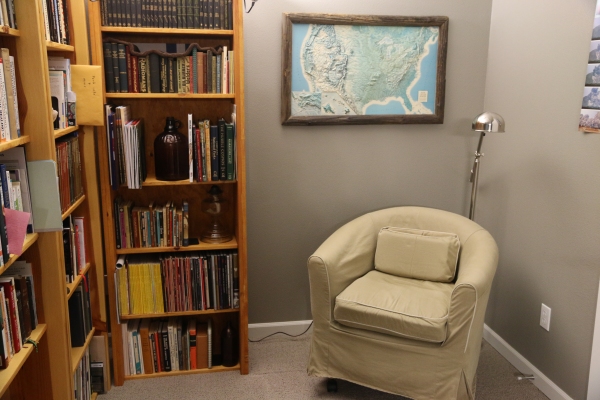 |
Here's the corner of my bedroom. The two taller back-to-back bookshelves contained books, about 70 National Geographics and numerous saved magazines. In the corner, and behind the two taller bookshelves, were 14 "Staples" boxes and 4 U-haul boxes with keepsakes, LP records, bottles, and other items. (The "keepsake" boxes are shown in the left of the very first two images above.) |
Here's the "after". Now I have a nice corner reading area! |
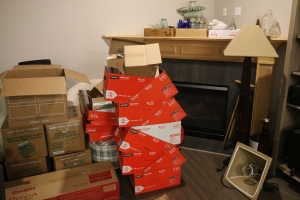 |
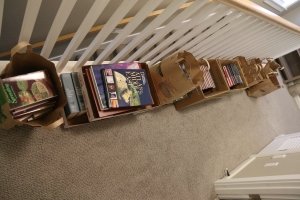 |
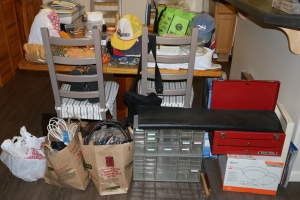 |
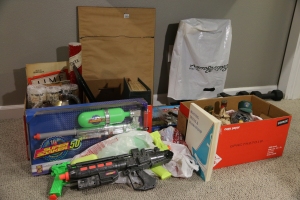 |
In the "Tidying" book, Ms Kondo coined the term "Kon-Marie-ing"
to mean tidying up an de-cluttering using her methods. |
|||
Your author had a moving experience involving closure with his past, by way of a ceremonial burning. An essay on that is here: Closure
Copyright © 2018 J.A.
